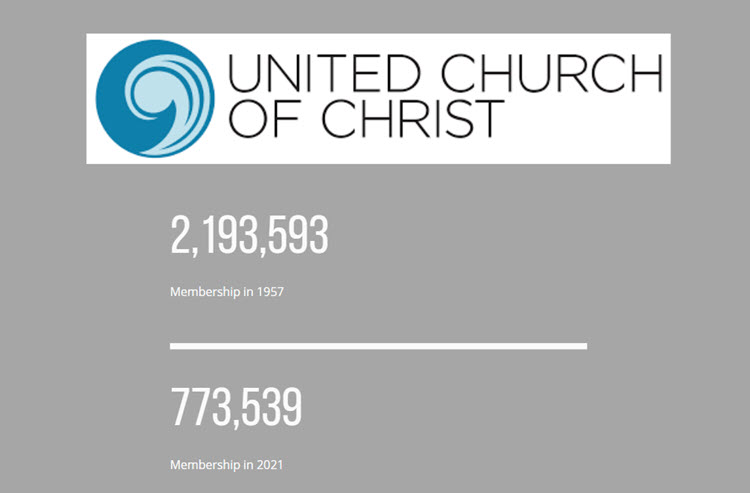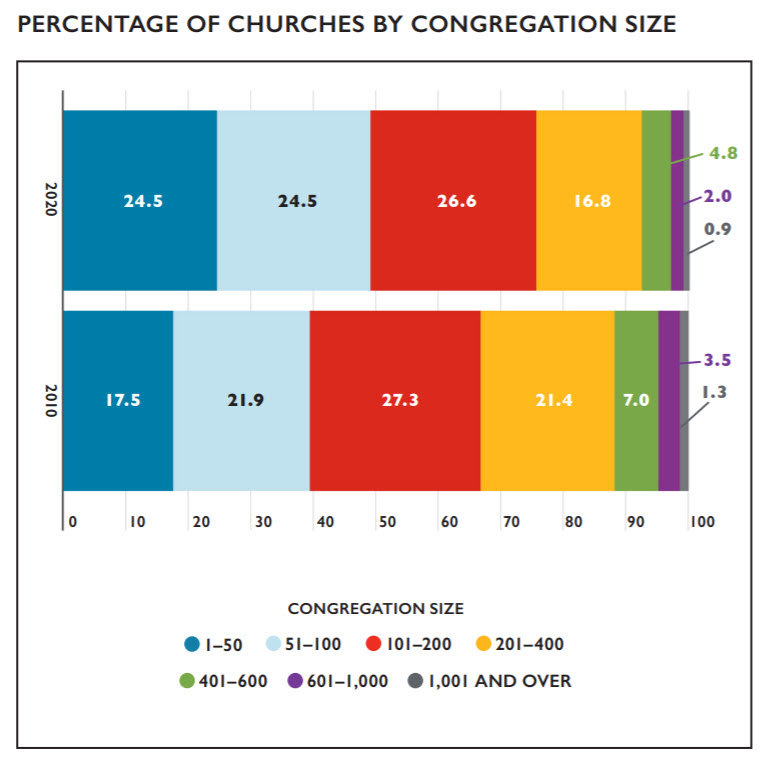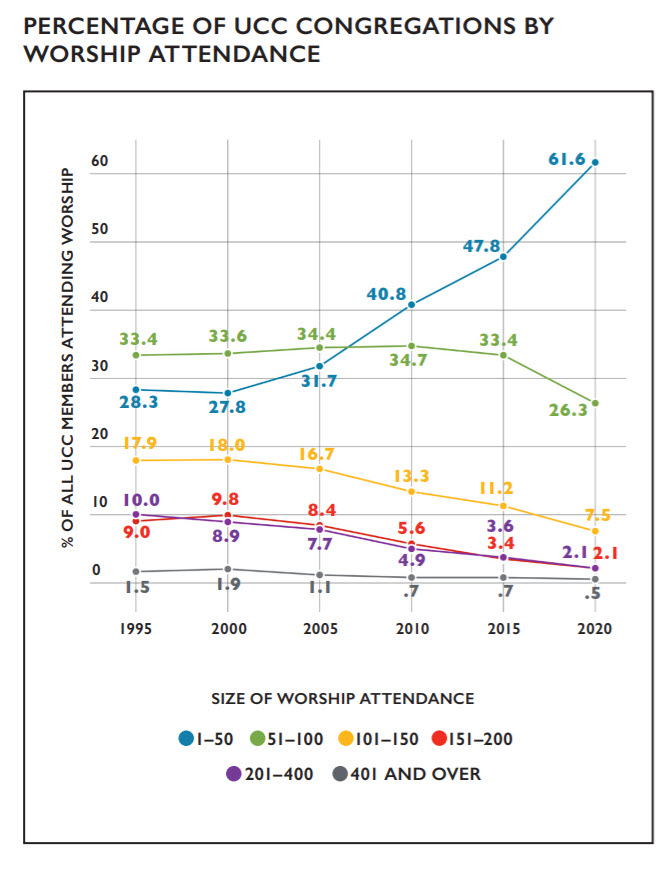Membership in all Mainline Protestant denominations has been in decline since before I was born. The United Church of Christ’s membership decline is not extraordinary or unusual when compared to other Mainline Protestant denominations.
Like many authors, I write about what I know and about what matters to me. As a result you’ll find the greatest amount of information about membership decline in the two denominations I’ve invested more of my life in than the rest: United Church of Christ and Presbyterian Church (USA).
Membership in the United Church of Christ
In January 2022, The Center for Analytics, Research & Development, and Data (CARDD) published The United Church of Christ 2021 Statistical Profile. This document is filled with significant statistics, including membership. According to the latest data, the United Church of Christ is comprised of 773,539 members in 4,794 congregations.

In October 2018, I posted 6 Decades of Decline in the United Church of Christ offering an in-depth decade by decade consideration of the numeric decline in congregations and members during the denominations first six decades (a post that now ranks as the 7th most popular of nearly 2,000 published).
In February 2020, I posted UCC Decline Enters 7th Decade to update numbers to include another year of decline, and to highlight statistics showcasing how common small attendance congregations had become (a post that is now the 16th most viewed all time).
Now in February 2022, two editions of the annual statistical profile have been published since my 2020 post. In all, five years of then current data are captured – from the 2017 report in the 2018 post through the 2021 report in this post. During that time, membership
| 2017 | 2021 | Change | Percent Change | |
| Congregations | 4,956 | 4,794 | -162 | -3.27% |
| Members | 853,778 | 773,539 | -80,239 | -9.40% |
Growing Smaller and Smaller
Since I got involved in the United Church of Christ in 2010, average congregation size has declined significantly. As of 2020, nearly half of all congregations had fewer than 100 members (49.0%) compared to just under 4 in 10 a decade earlier (39.4%). Notably, from 2010 to 2020 the percent of congregations in every larger category (ranging from 101-200 to 1,001 and over) declined.

Since congregations vary in their practices related to cleaning up membership rosters, average worship attendance has long been viewed as a more useful comparative metric between churches or within a given church over time (at least until the onset of the global COVID-19 pandemic). Since 2005, the percent of congregations in the United Church of Christ with an average worship attendance of 1-50 has nearly doubled, rising from 31.7% to 61.6%.

So What?
Mainline Protestant decline is old news. Recent declines in the United Church of Christ are largely in line with what one would expect in light of longer term trends in the denomination and in the Mainline Protestant denominations as a whole.
The COVID-19 pandemic has accelerated change. One should expect to see rates of decline in both membership and congregations increase for at least the next few years.
And, just as importantly it should be noted that while the overall trend is decline there are many healthy congregations in each size category and also congregations that are experiencing growth during the pandemic. I’ve written elsewhere about my affiliation with several such congregations. Since February 2017, I’ve been a member of Cathedral of Hope United Church of Christ in Dallas, Texas – a congregation that continues to flourish and remains in the top size categories for both membership and worship attendance.
I’d welcome the opportunity to hear your congregation’s story, and some of the ways you’ve personally invested in helping it move forward in recent years.